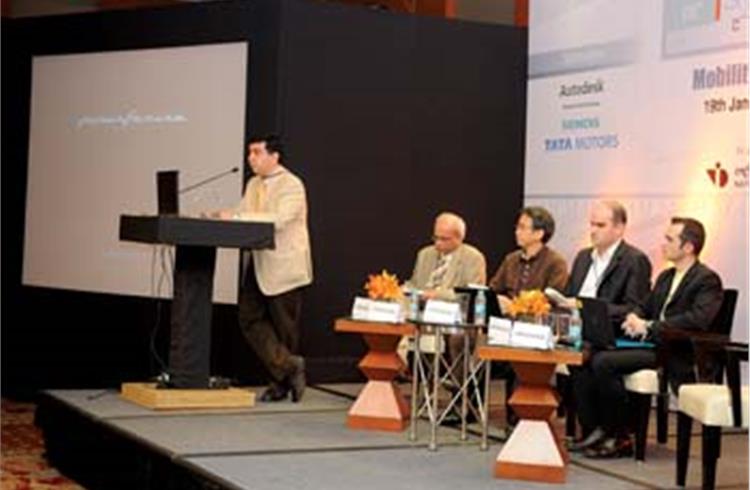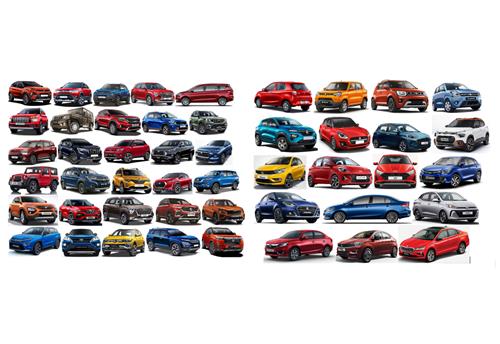India cars: industry targets 16 by 2016
Design matters, for both vehicle manufacturers and consumers. While carmakers find it helps differentiate their products in a hugely competitive marketplace, new car buyers make a beeline for the products whose styling they find appealing. But how really Indian are the Indian cars in terms of design and styling?
The Society of Indian Automobile Manufacturers (SIAM), in association with the National Institute of Design (NID) held its third Styling & Design Conclave on January 19 in Mumbai where industry experts debated on the various challenges facing designers and the auto industry. It was an attempt to evaluate and find ways to meet global standards, which would benefit Indian automobile designers and also component and vehicle manufacturers.
While India’s fast-evolving design capabilities are helping it procure new global automotive clients, when will it be able to deliver the conceptual design of vehicles meant for global markets? Ideally, experts claim that designing an automobile in India will cost only a fifth of what it costs in the West. At present, the design and engineering services offshored to India are mainly of the mechanical type and limited to data, analysis/validation and manufacturing engineering services.
Foreign automakers like GM and Renault have set up their own vehicle design centres in Bangalore and Mumbai respectively, a move which has led to as many as 20 institutes introducing courses in automotive design in India.
While vehicles like the Mahindra Scorpio or the groundbreaking Tata Nano have been totally developed and engineered in India, both have received European design and styling inputs.
Sixteen by 2016
The Conclave, running on the theme of ‘Mobility in India 2016’, saw the automotive industry set itself a delivery target of 16 all-Indian cars by 2016. It focused on how consumer tastes and preferences have evolved and the manner in which automakers are meeting these changing needs in terms of style and design.
At the inaugural session, Darlie O’ Koshy, director, NID and author of Design Edge, said, “In 1900 one-third of the cars in the US were battery operated. By 1908 petrolem and gasoline came into vogue and everything changed. Now it seems we are going to complete a full circle. In the Indian context, we need to look at breakthrough innovation and design in a comprehensive manner and not just at automotive styling. Also, environment and sustainability issues would become more important aspects.”
Dr Pawan Goenka, president, automotive, Mahindra & Mahindra and vice-president, SIAM, said, “Consumers in India give a lot of emphasis on design. We still do not have a 100 percent Indian car. But Indian designers have definitely matured and have the capability to go the long way and build indigenous cars.”
C V Raman, Chairman, SIAM Styling & Design Group and chief general manager, Maruti Suzuki India, said: “Styling is emerging as a key differentiator for consumers as they decide on the make and design of the vehicle while purchasing. Design can have the greatest influence on customers’ emotional response to the product.”
The opening session was dedicated to the plan India needs to follow to move into 2016. Sandeep Karyakarte, technical chief – ERC, Styling Studio, Tata Motors, said, “Despite the current global economic downturn, it’s an opportunity for the Indian automotive sector. This is the time when we can look deeper and decide the future path. It’s the time to find an answer to how India will move into 2016?”
Strident call for innovative design
Taking this thought forward, Shombit Sengupta, chairman, Shining Consulting, spoke about lateral thinking. According to him, the time is just right to hold a conclave on automotive design and styling as there's much activity in the field in India. Sengupta said, “To design a car for 2016, India needs to think lateral. Industry needs to get into the consumer’s mind and bring out something innovative and different.”
The second session – ‘India Disconnected’ – had B Bhaumik, head of design, Mahindra & Mahindra, say, “There’s nothing like an Indian design. We need to bridge this global gap and there are enough opportunities to achieve this.” Meanwhile, Hormazd Sorabjee, editor, Autocar India, who moderated the session, said: “India’s automotive industry needs to do a lot of introspection. Where is Indian design? We are still lagging behind as far design goes. There is no India design as such. Certainly the cost factor is in our favour but we need to look beyond and identify our own strengths.”
Lowie Vermeersch, head of styling at Italian design studio Pininfarina, had a point when he said, “More than anything, India needs to develop its own styling. Design in 2016 will be decided by the students of today. In every sense the future lies in the students of today and that’s where the investment should be made.”
Most speakers at the conclave were hopeful that Indian designers would be able to chart their own path in automotive design. They also discussed the ways in which the Indian auto industry and the designing community could meet the standards set by developed countries.
In the closing session – Got it Right! – Roberto Piatti, CEO and managing director, Torino Design Srl, emphasised the need to make optimum use of resources to innovate. According to Piatti, “A lot of technology is available to us and it is easy to artificially select and plan a new evolution. While making cars, we are still not fully using the power of these new technologies as other products do.” In a display of a complete out-of-the-box thinking, he added, “Cars are invading our space and have no value when not in use. Why not make cars that can be of some use when not being driven around? For instance, the hood can be designed like a park seat and passersby can just sit on it when the car is parked.”
Ramkripa Ananthan, head of styling, Mahindra & Mahindra, spoke about the evolution of the recently-launched Mahindra Xylo. According to her, “Xylo is a design story in itself. It is loaded with true Indian values and yet it is a global car. We were a small team working on this design which is a testimonial to the fact that Indian designers are capable of going the long way.”
At the end of the long day, the mood was still upbeat. There were plenty of views on empowering designers. Adil Jal Darukhanawala, editor-in-chief, Auto, The Times Group, said, “How progressive is the car manufacturer in today’s time? Is he liberal enough to empower the designer?”
To sum up the day's proceedings, there was consensus that the past is omnipresent, comforting but hindering future growth. Clearly, Indian automakers and designers need to think different and innovatively if they are to come up with original and pathbreaking design.
RELATED ARTICLES
Maruti Fronx sells 135,000 units in 12 months, second best-selling Nexa model in FY2024
Baleno-based Fronx compact SUV with 134,735 units accounts for 21% of Maruti Suzuki’s record utility vehicle sales of 64...
Utility vehicle share of PV sales jumps to 60% in FY2024, cars and sedans hit new low of 37%
Sixty percent of the record 4.21 million passenger vehicle sales in India came from 2.52 million UVs, a big leap from th...
Mahindra XUV300 tops 250,000 sales ahead of XUV3XO reveal
The popular compact SUV, which ranks among India’s Top 20 utility vehicles for FY2024, is among the SUVs which have powe...





 By Autocar Pro News Desk
By Autocar Pro News Desk
 04 Feb 2009
04 Feb 2009
 2313 Views
2313 Views









